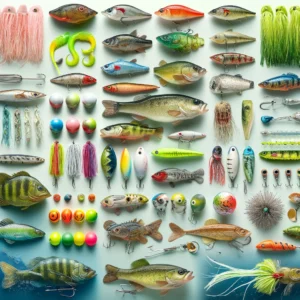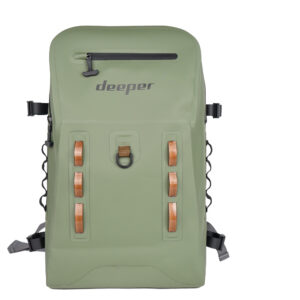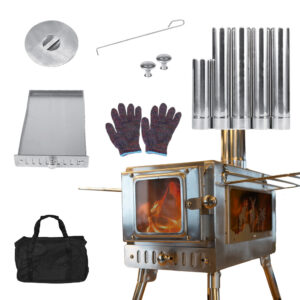
As spring transitions into summer, bass anglers eagerly anticipate the post-spawn period—a time when largemouth bass are recuperating from the rigors of reproduction and returning to their regular feeding habits. This window presents unique challenges and opportunities for anglers, requiring a strategic approach and the right gear to entice these weary fish. In this guide, we delve into the art of post-spawn bass fishing, exploring effective techniques, essential lures, and recommended equipment to maximize your success on the water.
Understanding Post-Spawn Behavior:
Post-spawn bass behavior can vary depending on factors such as water temperature, location, and available forage. Generally, after spawning, bass are hungry and seeking to replenish lost energy. They often retreat to deeper water structures like points, ledges, and drop-offs adjacent to their spawning grounds. Additionally, they may relate to cover such as submerged vegetation, fallen trees, or rock piles while actively feeding.
Techniques for Post-Spawn Bass Fishing:
1. Finesse Fishing: During the post-spawn period, bass can be finicky and selective. Finesse techniques like drop-shotting, shaky heads, and Ned rigs excel in tempting cautious bass. Use light line and subtle presentations to mimic natural prey, enticing bites from wary post-spawn bass.
2.Slow-Retrieve Baits: Opt for slow-moving baits such as soft plastic worms, creature baits, and crawfish imitations. Dragging these baits along the bottom near cover can trigger strikes from lethargic post-spawn bass.
3. Topwater Tactics: As water temperatures rise, post-spawn bass become more active. Target them in the early mornings or late evenings with topwater lures like buzzbaits, poppers, and frogs. These surface presentations mimic distressed baitfish and insects, drawing explosive strikes from hungry bass.
4. Jerkbaits and Crankbaits: Suspending jerkbaits and diving crankbaits are effective for covering water and enticing post-spawn bass suspended around structure or chasing baitfish. Vary your retrieve speed and depth to find the optimal presentation that triggers strikes.
5. Jigging and Flipping: Present heavy jigs or Texas-rigged plastics around cover like brush piles, docks, and submerged vegetation. Pitching or flipping these baits into tight spaces can provoke reactionary strikes from territorial post-spawn bass guarding their nesting areas.
Essential Lures for Post-Spawn Bass:
1. Soft Plastic Baits: Worms, craws, creature baits, and swimbaits in natural colors like green pumpkin, watermelon, and black/blue are versatile options for targeting post-spawn bass in varying conditions.
2. Spinnerbaits: White or chartreuse spinnerbaits with willow or Colorado blades are effective for covering water and attracting aggressive post-spawn bass, especially in stained or murky water.
3. Jerkbaits: Suspending jerkbaits with realistic finishes and erratic action closely mimic injured baitfish, triggering reactionary strikes from post-spawn bass.
4. Crankbaits: Shallow to medium diving crankbaits in shad or crawfish patterns are ideal for probing depths and enticing post-spawn bass suspended around structure or chasing baitfish. 
5. Topwater Lures: Popper-style baits, buzzbaits, and frog imitations create commotion on the surface, drawing post-spawn bass to strike aggressively.
Recommended Equipment for Post-Spawn Bass Fishing:
1. Medium to Medium-Heavy Rods: Choose rods with enough backbone to handle hooksets and control fish around cover, yet with sufficient sensitivity to detect subtle bites. A 6'6" to 7'2" rod with a fast action is versatile for a range of techniques.
2. Quality Reels: Opt for baitcasting or spinning reels with smooth drag systems and adequate line capacity. Match the reel to the rod for optimal balance and performance. Consider DoYo Coba IV Baitcast Reel – Black or Purple
3. Fluorocarbon or Monofilament Line: Fluorocarbon line offers low visibility and abrasion resistance, ideal for finesse presentations and fishing around cover. Monofilament line provides buoyancy and forgiveness, suitable for topwater and shallow cranking applications.
4. Terminal Tackle: Stock up on a variety of hooks, weights, and terminal tackle to customize rigs for different fishing scenarios. Offset worm hooks, bullet weights, and jig heads are essential components for Texas rigs, Carolina rigs, and jig presentations.Mastering post-spawn bass fishing requires adaptability, patience, and a well-rounded arsenal of techniques and equipment. By understanding post-spawn bass behavior and employing the right tactics, lures, and gear, anglers can capitalize on this seasonal transition to hook into trophy-sized largemouth bass. So, gear up, hit the water, and prepare for memorable battles with post-spawn bass. Happy fishing!




